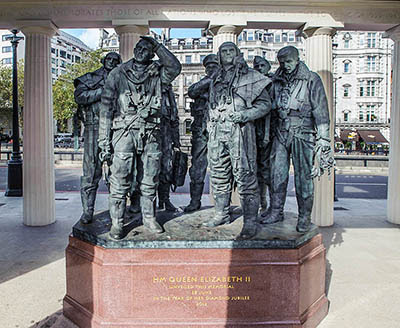An Unsolved Mystery Part 2
Read Unsolved Mystery Part 1
Investigator Binks' belief the airman could be Harris came from a vague physical description, the statement from Vosmer that the airman was a farmer from Winnipeg and his name had a similar ending to ‘Tiss’ or ‘Liss.’ Binks himself conceded the evidence was anything but conclusive.
It is unlikely the airman was Robert Harris for several reasons:
If not Harris, then who could the mystery airman be?
On the evening of March 7/8, 1945, nineteen Lancasters, a Halifax and a B-24 bomber went down in Germany, resulting in the deaths or unknown whereabouts of 122 Allied airmen. Of those 122, an astounding seven (including Harris) were from the Winnipeg area.
Including airmen killed or declared missing between March 5 and 8, incredibly 21 were from the Winnipeg area and nearly all matched the description of the airman: Brown hair and blue eyes. Unfortunately each of the 21 can be discounted as their remains were positively identified; the wreckage of their aircraft was found too far away; or, because they had no farming experience.
In addition to Wilhelm Bandermann and Gustov Meyer, two other villagers were implicated in the case. Each of the four suspects accused the other in court and with the added complication of Bandermann’s mental health issues (he received a severe head injury in World War I), a conviction for the war crime was never secured.
The Air Ministry Casualty Branch of the RAF closed the case into the identification of the unidentified Canadian airman in 1949. The remains of the mysterious airman of Klein Flöthe are still buried in Hanover Cemetery in Germany.
Investigator Binks' belief the airman could be Harris came from a vague physical description, the statement from Vosmer that the airman was a farmer from Winnipeg and his name had a similar ending to ‘Tiss’ or ‘Liss.’ Binks himself conceded the evidence was anything but conclusive.
It is unlikely the airman was Robert Harris for several reasons:
- The airman was uninjured. The mystery airman was unhurt when he parachuted from his aircraft. Harris and Smith were in the cockpit of the aircraft when it exploded. It would be hard to imagine Smith being killed and Harris escaping completely uninjured.
- Harris was never a farmer. Prior to enlisting, Harris worked as a naturalist and had boarded at a farm for a time but was never at any time a farmer. Vosmer spoke to the airman in English though it is clear from his official statements that his familiarity of English was rudimentary.
- Colbitz and Klein Flöthe are 100 km apart. Klein Flöthe was on the Bomber Command route that evening but Harris’ aircraft was shot down approximately 100 km east in the vicinity of Colbitz, Germany. Harris was the one who gave the ‘Jump’ order and the surviving crew confirmed he was at the front of the plane when it exploded. It is difficult to imagine any circumstance where Harris could parachute to the ground approximately 100 km away from both the crash site and from where the four survivors, Hicks, Kelleher, Nicol and Yemen landed.
- The pay book. The carrying of identification other than ‘dog tags’ was expressly forbidden and given his regimented personality, Harris would not be carrying any identifying documents.
If not Harris, then who could the mystery airman be?
On the evening of March 7/8, 1945, nineteen Lancasters, a Halifax and a B-24 bomber went down in Germany, resulting in the deaths or unknown whereabouts of 122 Allied airmen. Of those 122, an astounding seven (including Harris) were from the Winnipeg area.
Including airmen killed or declared missing between March 5 and 8, incredibly 21 were from the Winnipeg area and nearly all matched the description of the airman: Brown hair and blue eyes. Unfortunately each of the 21 can be discounted as their remains were positively identified; the wreckage of their aircraft was found too far away; or, because they had no farming experience.
In addition to Wilhelm Bandermann and Gustov Meyer, two other villagers were implicated in the case. Each of the four suspects accused the other in court and with the added complication of Bandermann’s mental health issues (he received a severe head injury in World War I), a conviction for the war crime was never secured.
The Air Ministry Casualty Branch of the RAF closed the case into the identification of the unidentified Canadian airman in 1949. The remains of the mysterious airman of Klein Flöthe are still buried in Hanover Cemetery in Germany.

Comments
Post a Comment